Jenna von Benedikt
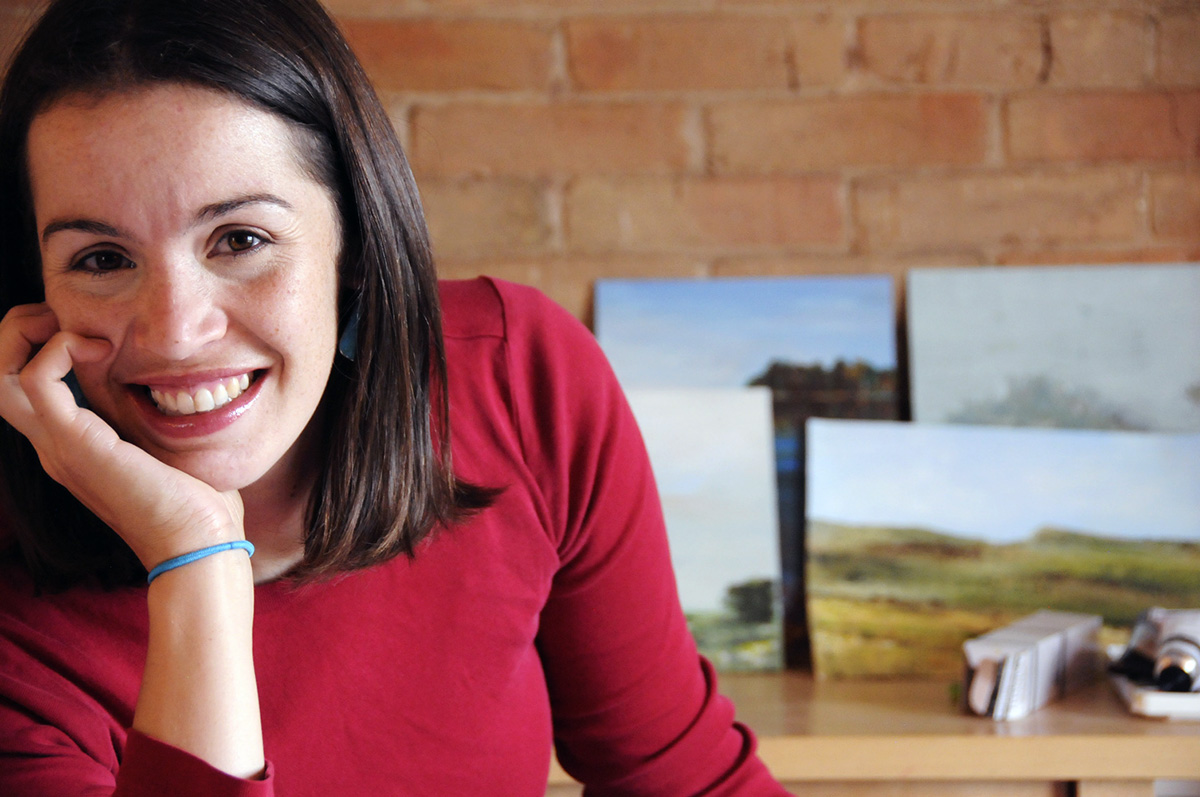
How did you get started with painting?
Studying fine art at Brigham Young University inspired my interest in painting. During my teens in Great Britain and America, I typically used charcoal, graphite, and ink in drawings. My first university art class—color theory—forced me to open up more tubes of paint than I ever had done previously, mix with them, mess with them, discover their qualities … and I loved it. Especially the way they found life on hardwood panels.
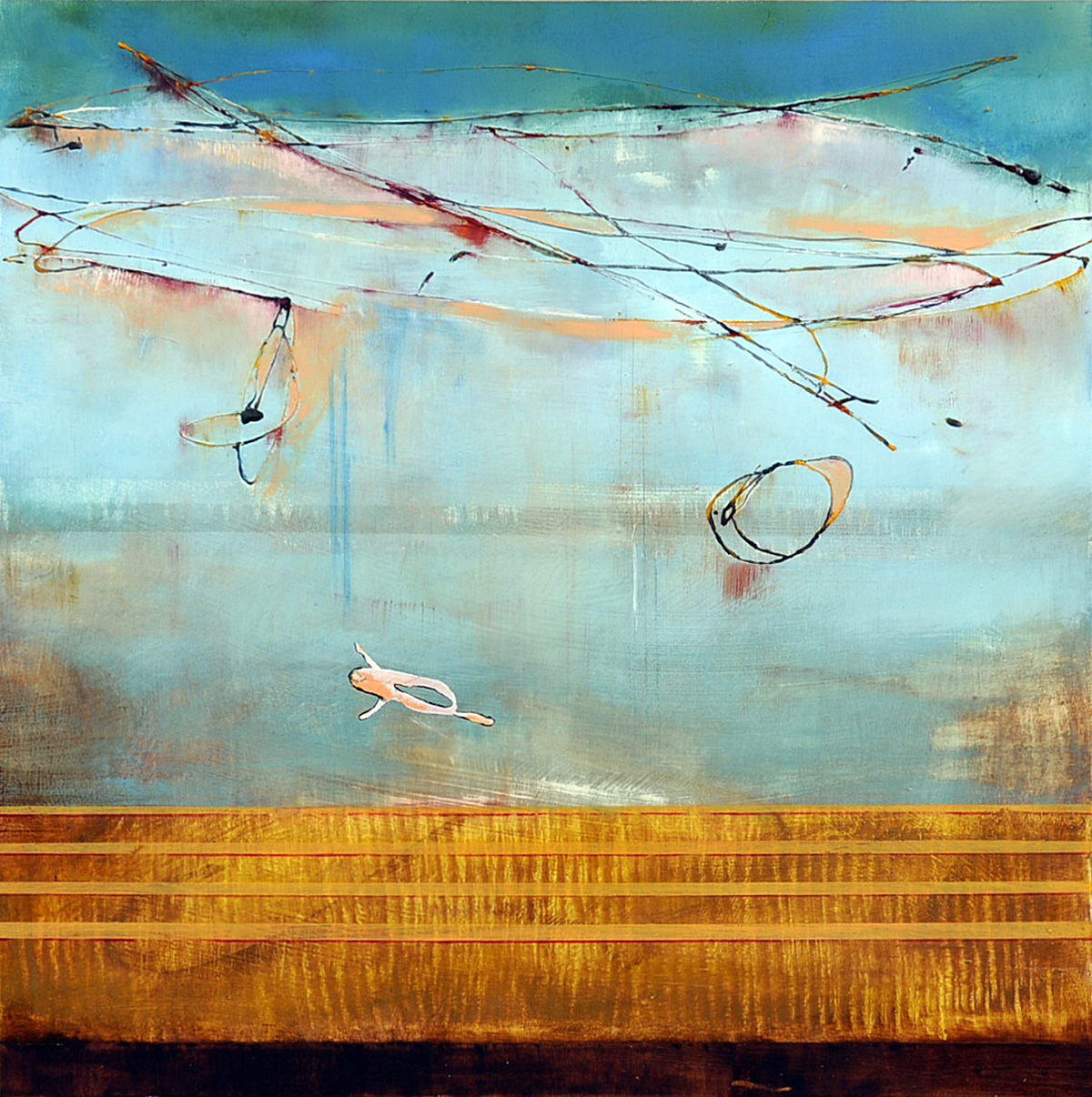
Years after graduation, during my time in Los Angeles, I found my painting style developing. Strong marks, defined lines, layers on layers… I frequented art museums and galleries seeing, up close, how paint was used. Living in vastly differing geographical locations—England, Utah, California, Italy—taught me to look at my color palette differently, too, and emphasis on color found a strong place in my abstract work—the first organized body of work I painted.
Limited space in the various places we lived demanded that I paint in cycles—working madly for a two-week period wherever I could fit an easel, then cleaning up to re-establish some kind of order. It didn’t make for great consistency, but it enabled me to maintain creativity between having babies and other responsibilities. Only recently have my painting habits become better established and I’ve found that painting in small, frequent segments of time is more productive than exhausting oneself in spasmodic marathon sessions.

You mentioned how the places you’ve lived have affected your color palette. What colors inspired you in each of those places?
It wasn’t until I moved to Utah from England that I really learned to appreciate—and started missing—deep green: the kind that comes from days of drizzling rain and belongs perfectly next to rich chocolate soil—two colors I love.
Utah offers some incredible sunsets. One clear evening my father-in-law pointed out to me the color wheel in the sky—the warm shades melting into the cool. It was extraordinary. I haven’t looked up at a clear evening sky the same way since. And I’m always amazed at the transformation in geography as I drive from the northern part of Utah to the southern with its change from muted, dulled greens and yellows to powerful reds and oranges in red-rock country. In retrospect, that transition has probably inspired the hot red and oranges that have proved significant in many of my abstracts.
California is a beautiful, warm place that mingles bright color in conjunction with the urban sprawl of concrete and congested freeways, and although I felt quite vibrant living in L.A., I produced works with a lot of blacks and shaded tones in them while I lived there.
A study abroad in Italy—where the terra cottas and siennas of ancient architecture blended with the contemporary colors of modern humanity—showed me that in many areas, cultural color is profoundly and inseparably mingled with visible color. I suspect that dichotomy, more than anything, is why I’m so often torn between producing abstract art vs. landscapes—and why I frequently blend the two.
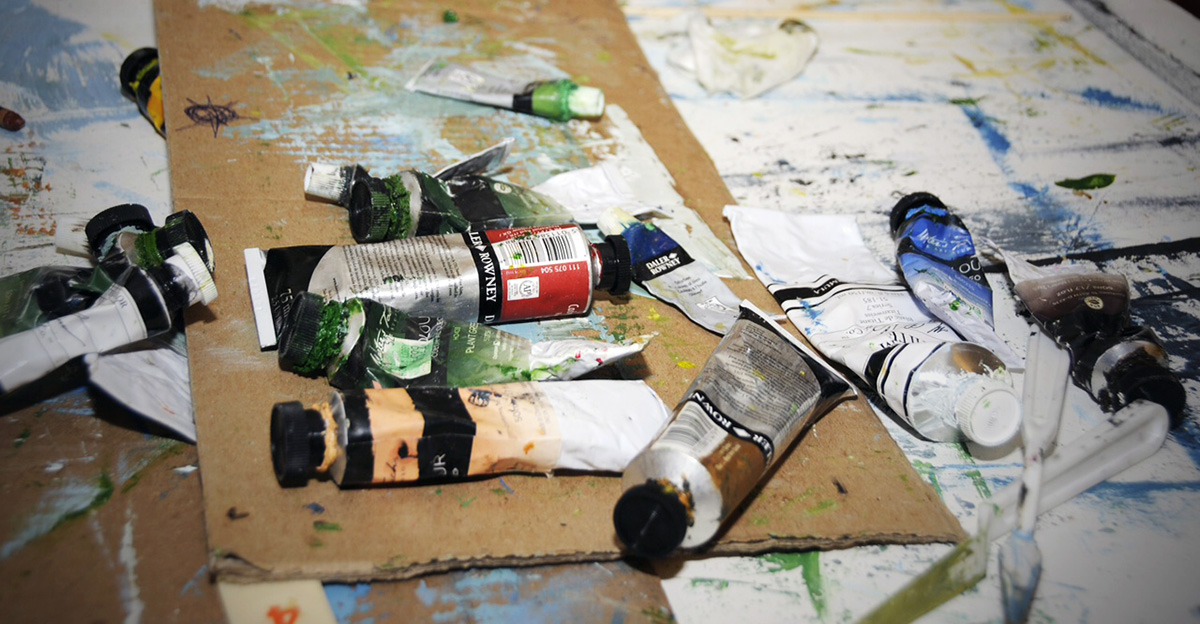
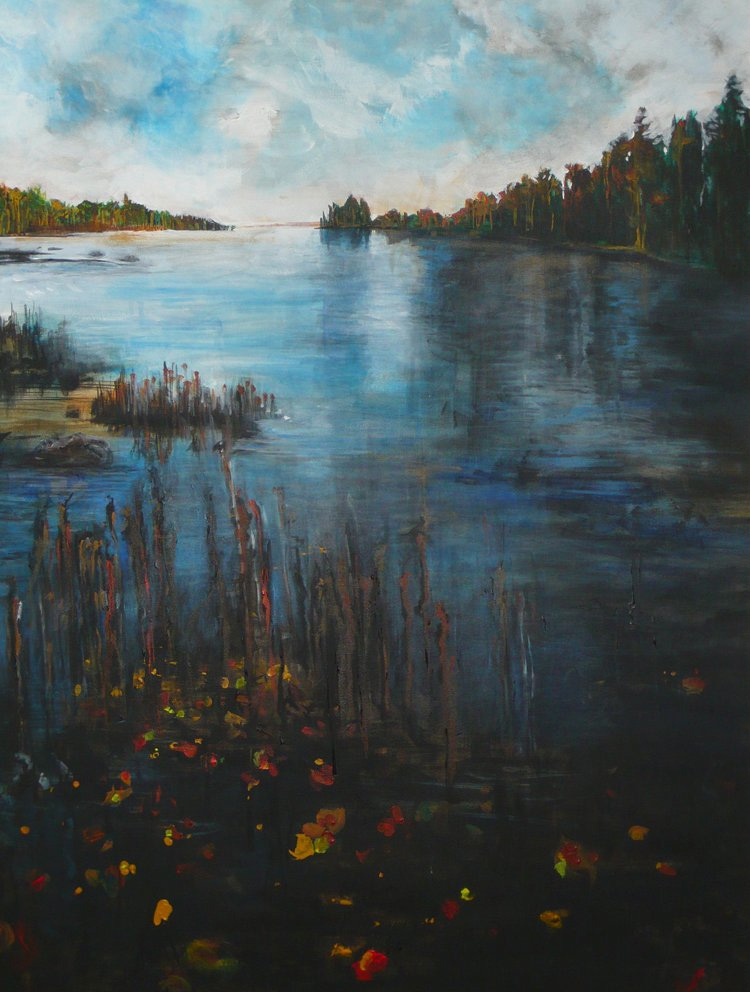
Tell us about painting Nordic Waters.
In 2009 my husband—an outdoor writer—was sent on assignment to Sweden for a moose hunt. Though he never saw a moose, he returned home with a camera card full of gorgeous scenery. Among the images was a picture of a lake he jumped in after enjoying a Scandinavian sauna. For him, it was a superb memory of a beautiful place, and I did a small, quick oil study of it—actually one of the first realistic landscapes I’d done. I enjoyed painting the water so much that I created a larger 40×30″ version of it: Nordic Waters. It is the piece that sparked my interest in painting landscapes, and in implementing a loose landscape theme among my abstracts. Creating it took longer than any other painting I had previously done, and was in fact so inspiring I can’t be persuaded to part with it. In a way, it represents a milestone. Until then, painting had been very process-based, very experimental, and had a high emphasis on color, with no particular theme. I rarely used a brush, but industrial tools. Nordic Waters helped refine the story in my work.
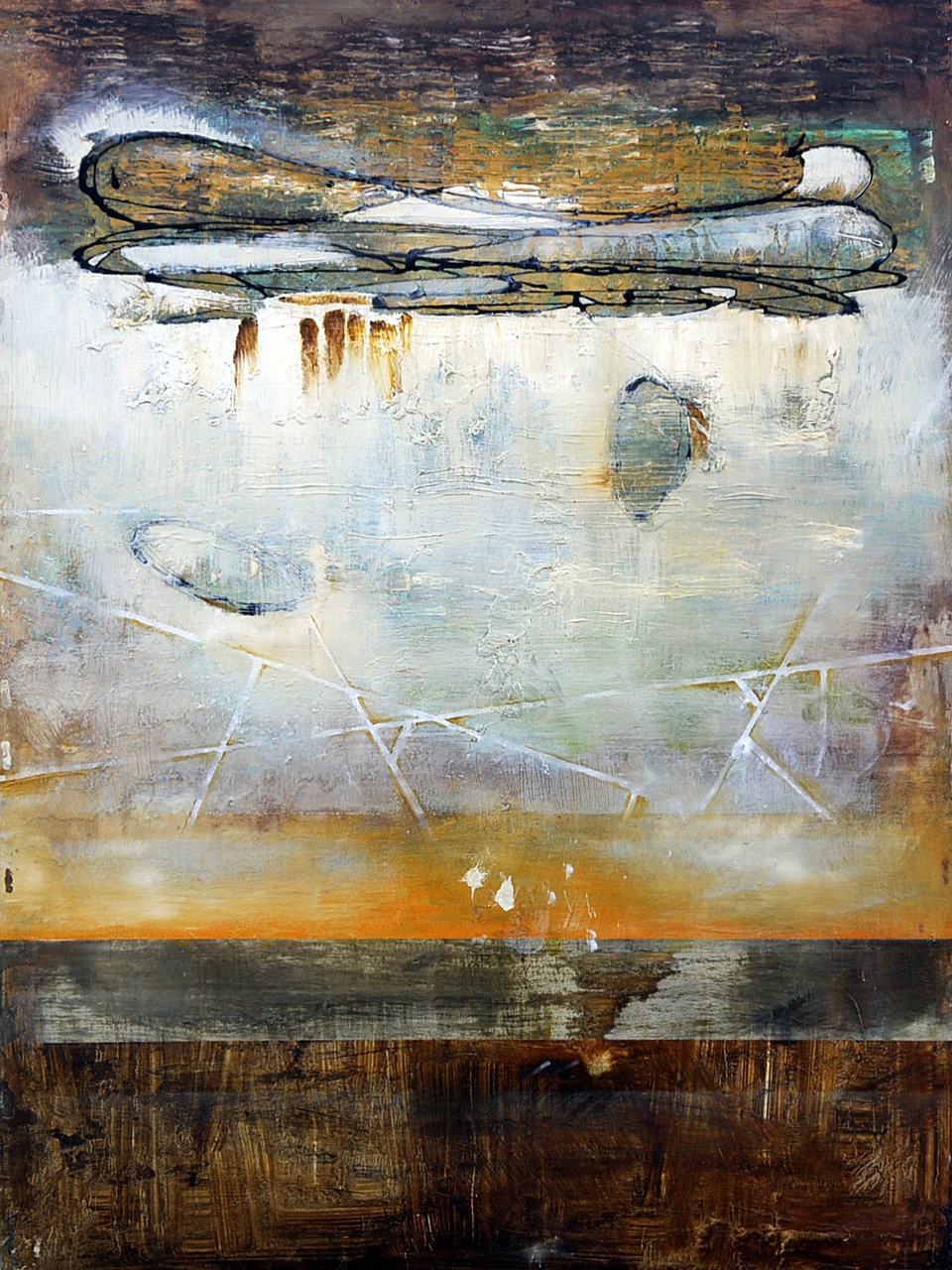
How does the gospel influence your work?
Though I don’t specifically categorize my work as religious art, I do have strongly held spiritual beliefs, and as in every other aspect of life, those convictions do influence my work.
Many of those beliefs have distilled from observations, epiphanies, and nature’s undeniable—to me—testimony of the Creation story.
Most of my abstract works have a dividing line or lines of some kind, reminding us that we are separated in mind and spirit (by choice) from a place we lived before; that we are only temporarily enjoying this “landscape”; and that we will carry on to another. My faith places a strong emphasis on the freedom to choose for ourselves between right and wrong during this allotted time on earth. There will always be opposition to contend with—the choices we make literally and figuratively define the “landscapes” we live in.
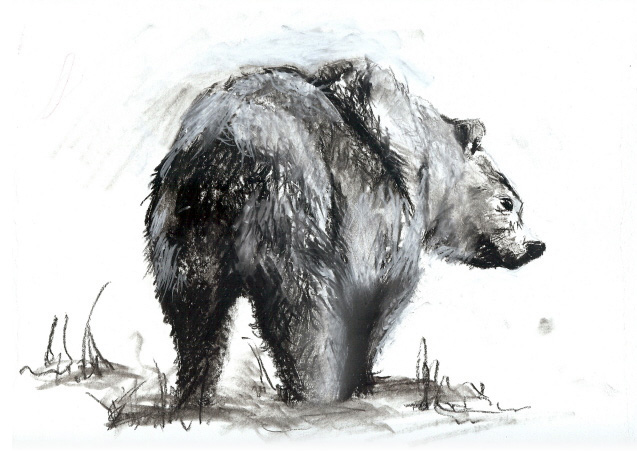
This mingling of unpredictable human experience—the decisions we make and the consequences we reap—meshed with nature as our backdrop, intrigues me. Mormon emphasis on the Creation is compelling, bringing understanding of the parallels in nature and human life—calm and chaos, beauty and brutality, solitude and intimacy, life and death.
So I suppose this is how my art is influenced by the gospel. It’s a process through which I can explore questions and beliefs and create something “good” (Genesis 1:31) for others to enjoy, to question, and to explore, metaphorically emulating the Creation.
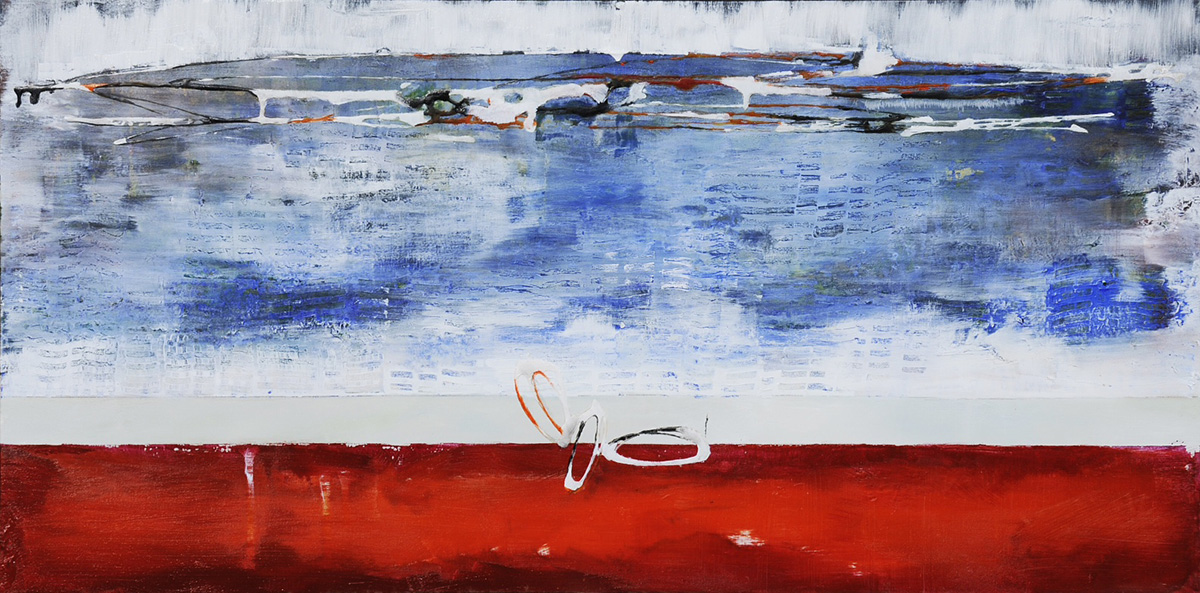
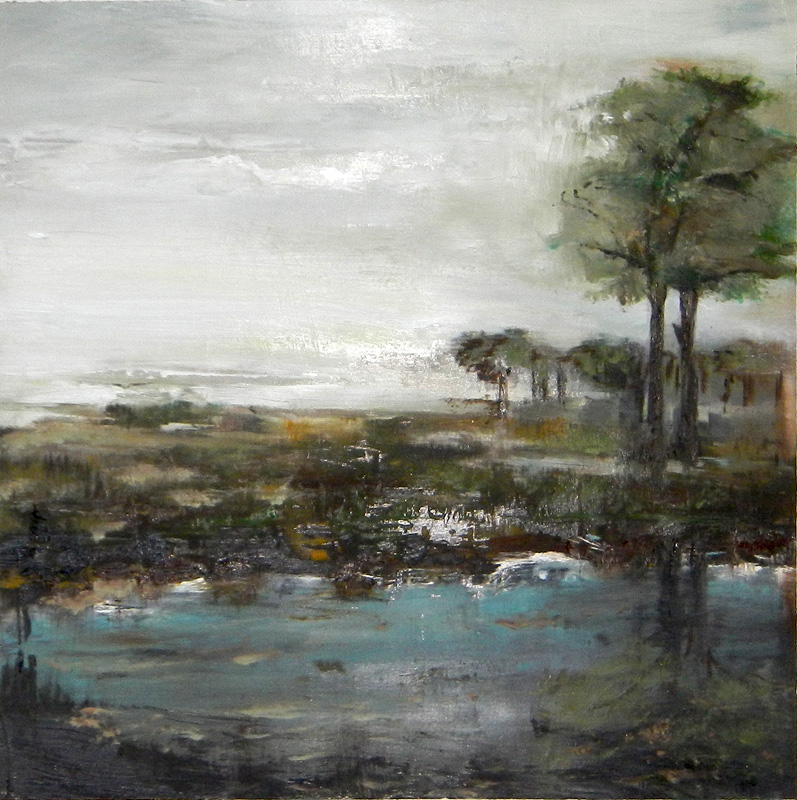
Which would you say is your most spiritual painting? Why?
Frankly, no one specific painting. Rather, I have an ongoing series of “saintly birds” that I draw and paint, more for myself than for other people. The birds represent spiritual messengers. The Bible is full of examples of varying feathered creatures sent among people, acting as a conduit for God to connect with his children. Sometimes in warning, sometimes as comfort, sometimes simply as a sign.
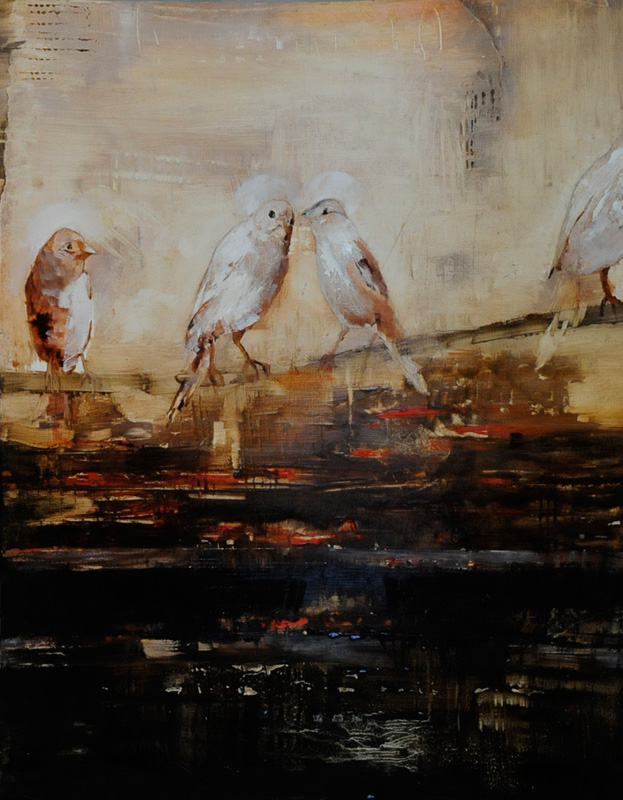
I see the apostles in this role. Christ taught his apostles not to worry about the minor necessities of life as they went about his work—they would be taken care of. “Fowls of the air” are also referenced to inspire us to trust in God as 3 Nephi 13:26–34 reads.
Perhaps I like the idea of birds being able to go places we humans cannot, and being able to see things from an entirely different perspective. What’s spiritual to me may mean little to someone else, so I try not to impose something on a viewer, but rather share what is significant and important to me.
Most of your paintings are landscapes and abstracts — what about those types of paintings attracts you?
I enjoy bold colors and lines, and abstract work offers more leeway for exercising those graphic elements. I’ve also learned a great deal about paint application and color combinations through my abstract pieces. There is something quite profound about just a color itself, as someone like abstract artist Rothko demonstrates. Creating abstracts, for me, has been heavily process-based and design-oriented, rather than trying to sell conceptual ideas for others to interpret.
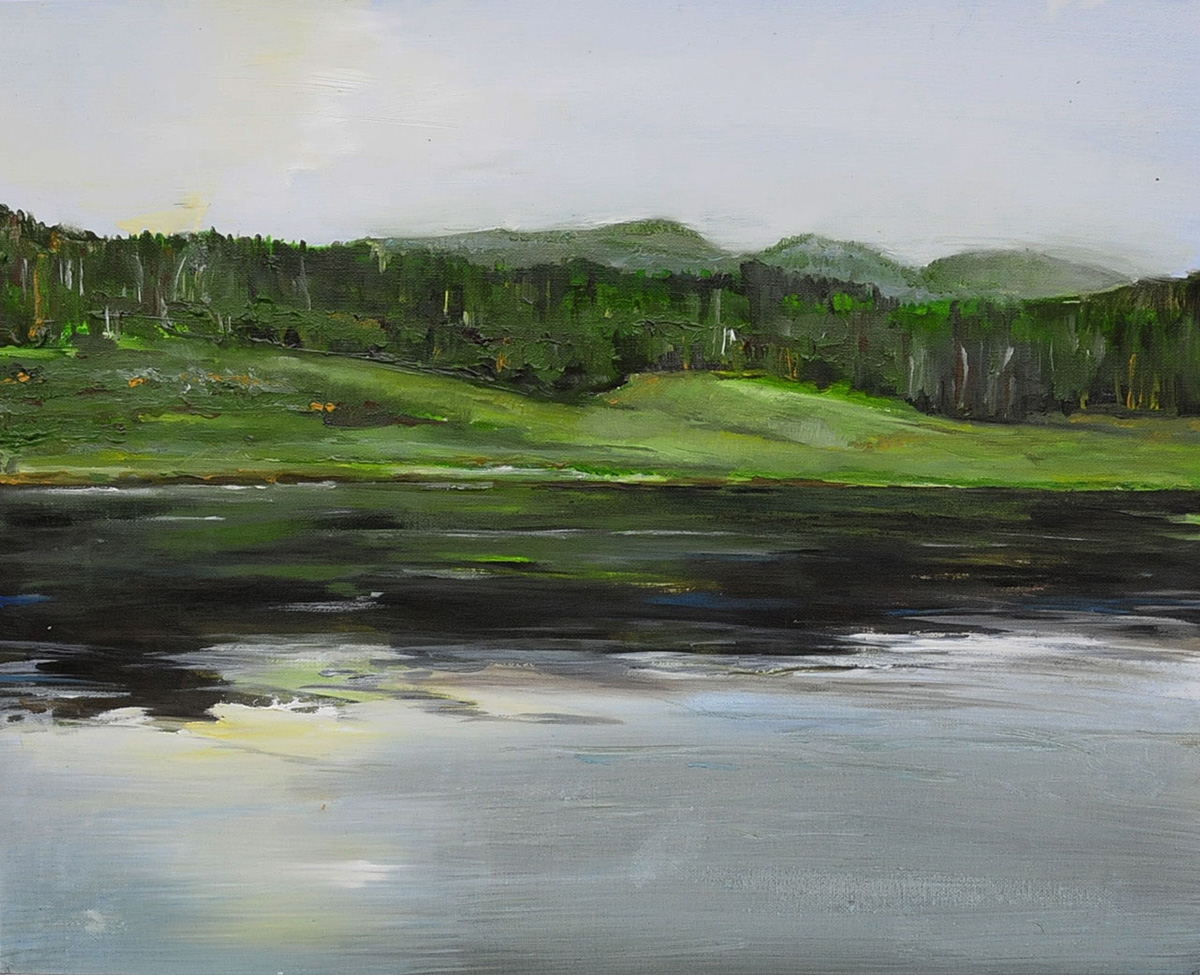
Landscapes as a form of painting are and always will be a significant, evocative, indicative form. Even currently, on the ultra-contemporary art scene, I’m inspired by the perception and skill of great landscape artists in my acquaintance, and lending my “voice,” if you will, to that conversation is a joyful outlet to my internal demand for tradition, for classical skill, for realism.
Perhaps I love landscapes, too, because they hold sentimental value connecting with my childhood: weekend afternoons rambling the British countryside, horseback riding with my father cycling along behind me, cricket fields, old stone churches, blackberry bushes along winding lanes and narrow streams… Good memories of times spent in nature and places of beauty make landscapes and scenery important to me.
How do you balance making art with being a mother and wife?
An excellent question, and one I’m still trying to figure out the answer to! Some evenings I think I’m incredible: we all survived the day (house included); each child had at least one good tickle session, and I may have put a first layer down on a painting. Other days, well…
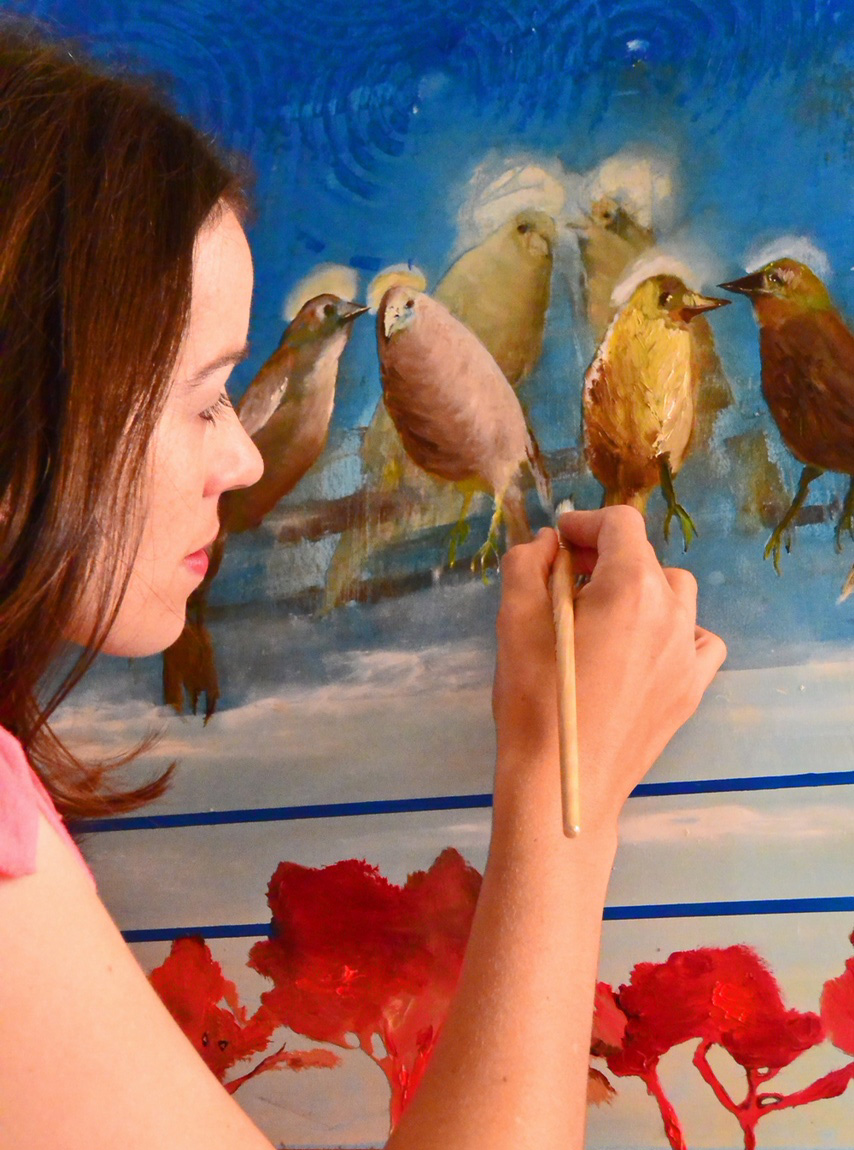
Utah artist Clay Wagstaff once explained to me that his productivity level increased greatly when he decided to paint whenever he could … even if it was out of the back of his vehicle while waiting during his daughter’s music lessons. His point: don’t let excuses get in the way. If you think you don’t have time, make the time. I needed to hear that. And I needed to become more organized.
My husband is a huge support and is very patient with me—when I get frustrated with a painting or the house isn’t as tidy as it should be because I’m desperately trying to complete a project—and I am grateful for his encouragement in pursuing my passion. My children enjoy painting or drawing in the kitchen with me, and it feels natural to have them with me when I work. At the end of the day, my family and home life are most important—and need the most attention. My children won’t always be young, won’t always want me to play with them or read books to them, so I soak that in and work on art when I can. Someday, I will be a full-time artist. I try to be aware of the times and seasons in my life.
In your view, what is art’s role in the gospel?
I believe the arts in general—music, art, literature—cultivate the spirit to give us further light, knowledge, and joy. The thirteenth Article of Faith was often repeated to me throughout my BFA: “If there is anything virtuous, lovely, or of good report or praiseworthy, we seek after these things.” If it makes you think, feel, and live better for having experienced it, then the art has succeeded, be it a comic strip, portrait, landscape, or an engaging abstract.
I have been uplifted by viewing incredible cathedrals, stained-glass windows, statues, and paintings in various places of worship, and that has taught me to look at art’s role in the gospel in a much broader light than art in a specific church or religion, because I think the two are very different—one being the message, the other being the vehicle to share that message.
Art, like the gospel, touches each individual differently. Yet the message can be the same—uplifting, hopeful, inspiring.
If my paintings have a positive effect on the people who see them, whether they are a religious zealot, an agnostic, or an atheist, I feel that I’ve succeeded as an artist, and, in a small way, have spread that “good news” I believe in.
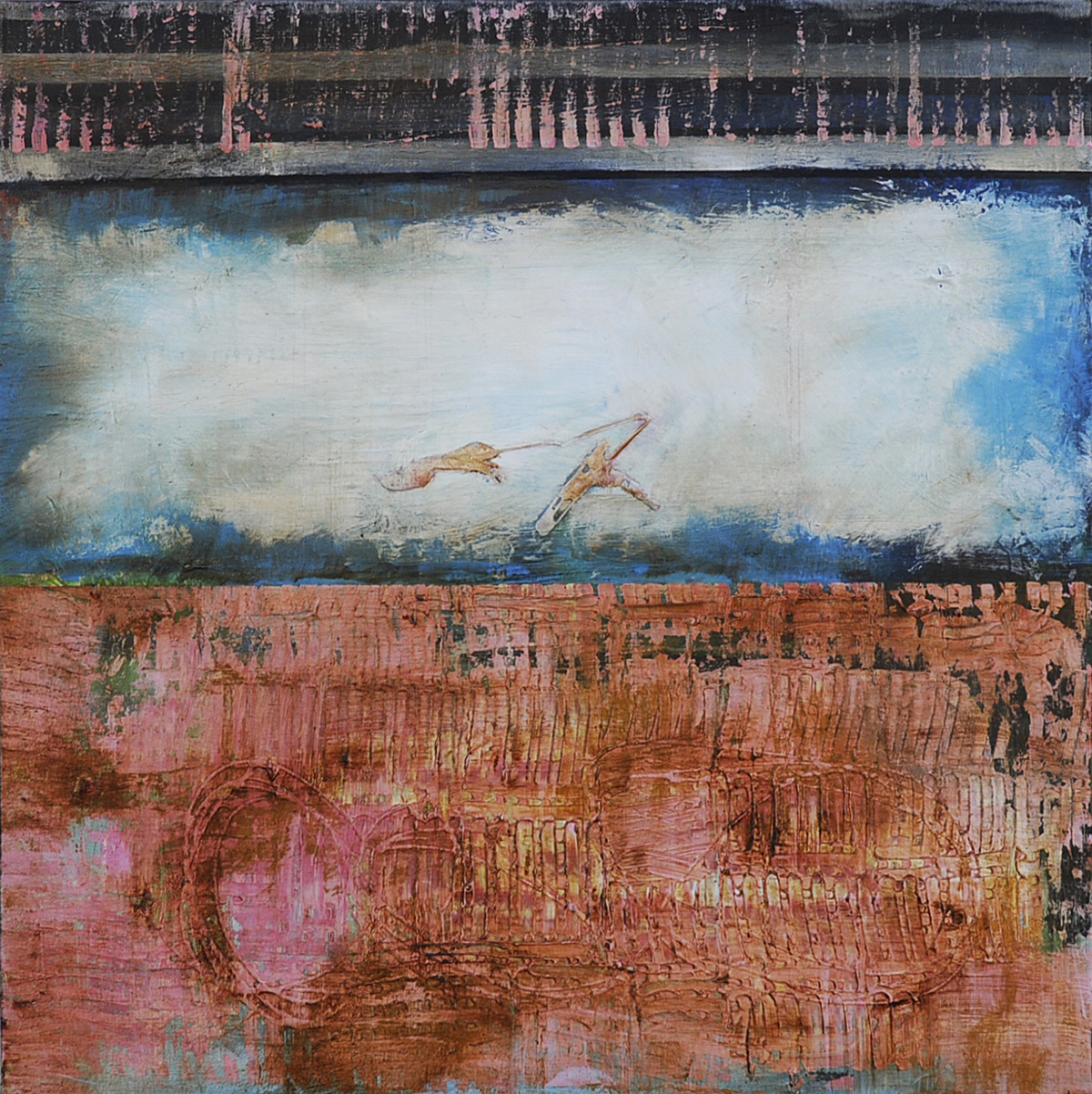
How do you make your art uplifting?
It’s not always easy—and in retrospect I haven’t always tried. But then, I’ve been known to feed a stack of panels to the rubbish bin because they seemed too dark—the colors were unintentionally “dirty,” the composition awkward, or they simply weren’t painted well.
Creating uplifting art is becoming of increasing importance to me; something I’m keenly interested in achieving… I try to create details and—as seen in my abstracts—bands of color that make my paintings interesting, but not so complicated that viewing one is a hectic visual experience.
Recently I was advised to “keep some quiet in your paintings.” I’m working on applying that concept more. I’ve recognized that “quiet” can play a big part in the uplifting factor. When I consider my favorite works of art, many have that element in them, giving viewers time to enjoy and resonate with the piece.
In just a few words, I try to keep my art personal, energetic, and honest.
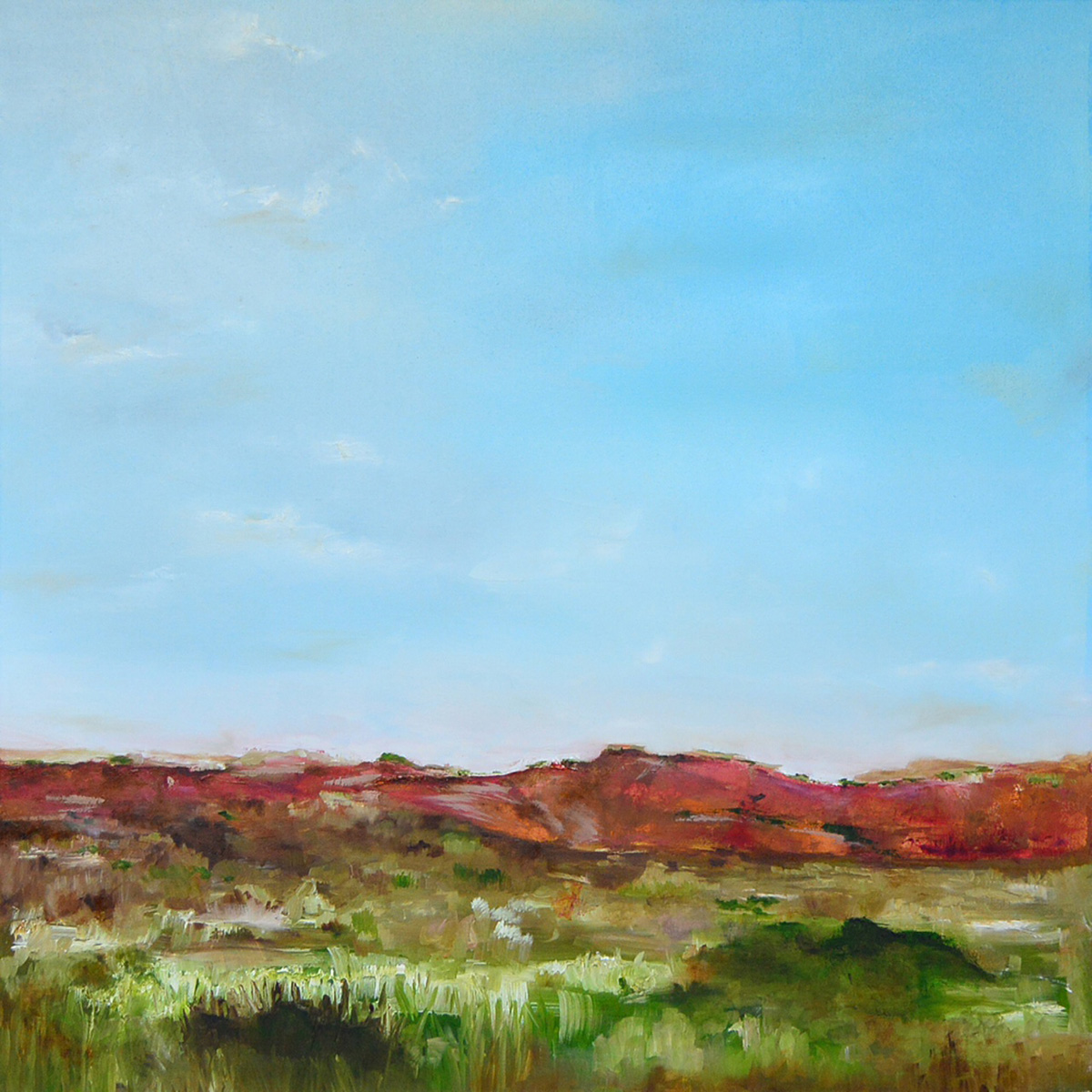
Which artists have influenced you the most?
Rothko’s works intrigue me—hues of color in extremely simple compositions were important when I first began painting.
Rembrandt and Hans Holbein the Younger are two old masters I am in awe of. Holbein’s Sir Thomas More stopped me in my tracks the first time I saw it and continues to inspire me every time I look at it. I would someday like to be able to emulate Rembrandt’s incredible glazing, his use of light and dark contrast… Carl Bloch made beautiful use of light and shadow as well.
Recently speaking, I’ve found that interaction with local artists generates creative energy and helps me refine my focus. I particularly admire Kirk Richards, Clay Wagstaff, and Brad Aldridge for their skills and the inherent beauty of their work; Wulf Barsch’s passion for perfecting one’s craft and for his mentoring; and any emerging artist whose enthusiasm for making art is encouraging and motivating.
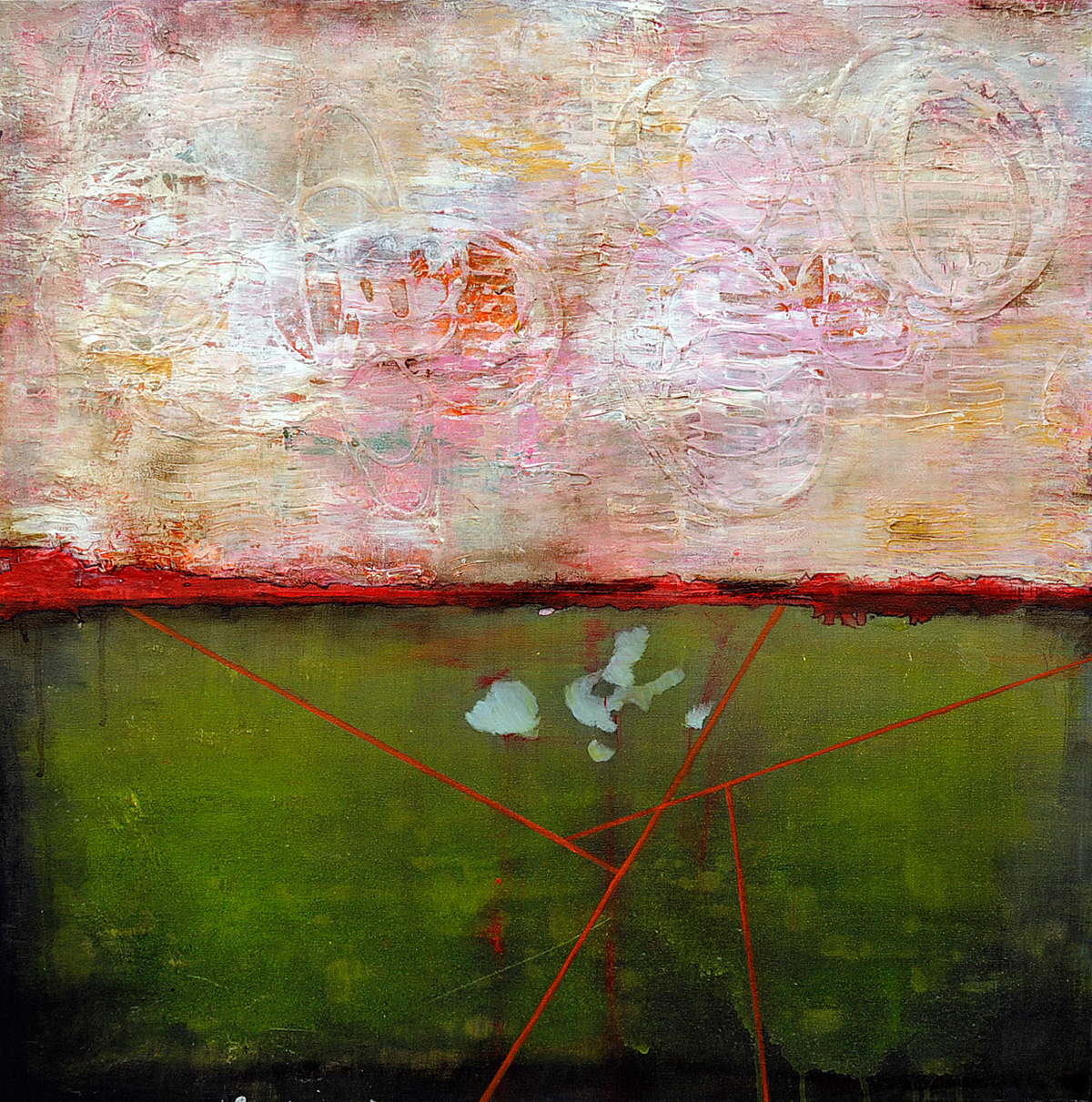
What are your future plans as far as your art?
Currently I’m creating more landscapes than I ever have in the past, along with crossover paintings with abstract elements in them, like my bird paintings. Though I love doing abstracts and will continue to try to improve on them, my increasing interest in landscapes and hybrid landscape/abstract art is drawing me in new directions.
Building my landscape body of work has proved challenging, and I have much to learn, but the process is fulfilling to a part of me that wants to connect with realism, to build a different skill set, and to define a specific subject matter.
The future? Of course gallery representation, hopefully with other artists I hold in high esteem; participation in national shows; and to produce ever-increasing quality. ❧
